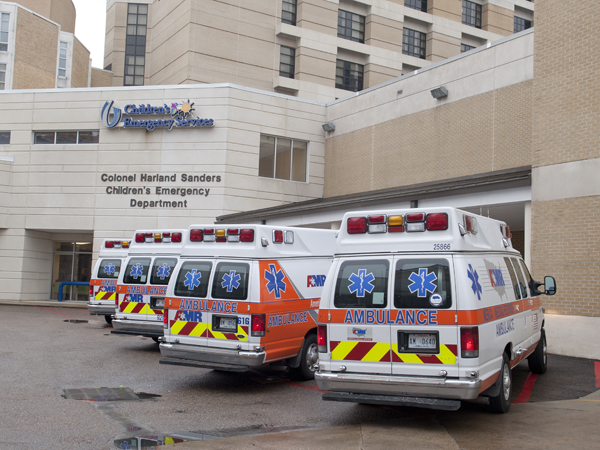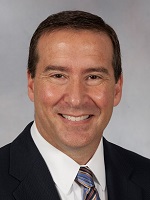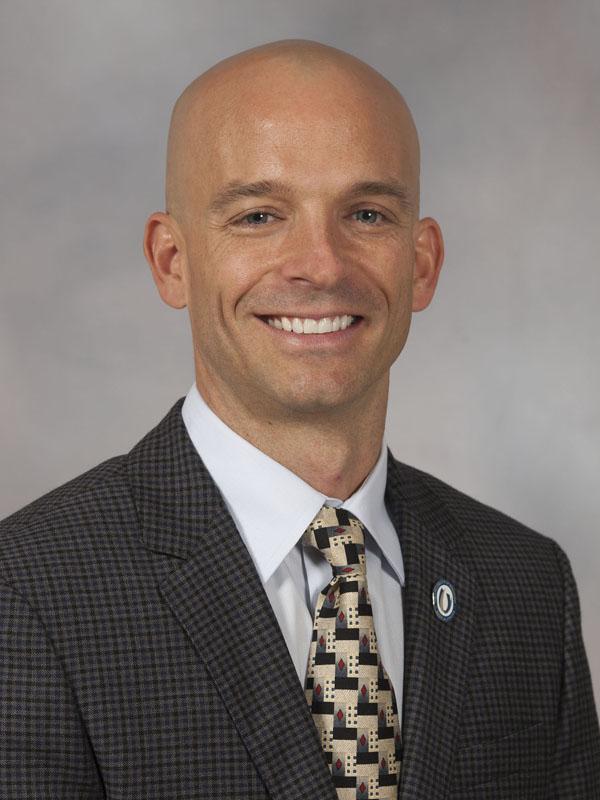Turning up the volume: Patient numbers reaching all-time highs

The good news: University Hospital is seeing a steady increase in patient volume, both in admissions and outpatient treatment. Ditto for clinic visits and Emergency Department traffic.
The challenge: Health-care workers, both clinical and nonclinical, must use available manpower, space and resources to continue providing quality care to patients as University Hospital stays at or near capacity.
"For July through December, we've seen steadily increasing volume in the Emergency Department, inpatient admissions, and other visits," said Dr. Alan Jones, professor and chair of the Department of Emergency Medicine.
In fact, through December 2014, the University of Mississippi Medical Center had recorded a 9 percent hike in inpatient admissions during the previous year, said Kevin Cook, CEO of University Hospitals and Health System.
"I firmly believe that the community votes with its feet," Cook said. "When more people come in your door, I see that as a vote of confidence.
"It's a nice problem to have."
In a January memo to the UMMC family, Dr. LouAnn Woodward said the Medical Center is analyzing the full spectrum of hospital capacity.
In recent months, "we have seen increased patient volumes in nearly every patient care setting, exceeding volume levels previously experienced," said Woodward, who succeeded Dr. James Keeton as vice chancellor for health affairs and dean of the medical school on March 1. "For a variety of reasons, however, the increased volumes have created capacity issues.
"We have experienced capacity and flow challenges in all areas of the hospital, including ICUs, inpatient units, operating rooms and the Emergency Department."
Those increases in volume are straining the system, Jones and Woodward said.

"We've taken an operation that functions on a very close margin . . . and we've had volumes that historically were never seen at UMMC," Jones said. "We've recently been running capacity pushing 120 percent."
During the last year, Cook said, "every ICU bed we have has been opened. We opened the overflow unit in Wiser (the Winfred L. Wiser Hospital for Women and Infants). A year ago, it wasn't even open, then went from partial use to full use."
ED charge nurse Adrian Davis and fellow staff spend their days and nights juggling patients and space to ensure everyone gets the care they need.
"The folks who are the sickest take priority, and you have to move people around to make room for those coming in," said Davis, a nurse at UMMC for 14 years. "You want to anticipate the transfers coming in, and you have walk-ins and EMS.
"Trying to make space for them is an ongoing challenge."
Their patient-care strategies include making wise use of the ED's Rapid Track service, which sees patients arriving at the ED who are not acutely ill.

"You try to be proactive and request beds for inpatients, and hope that the hospital is moving folks out so that there will be room," Davis said. "And we refer to our clinics people who don't have a regular doctor. They can make an appointment to be seen there so they won't have to spend a lot of time waiting in the ED" for a non-emergent issue.
Woodward has appointed Jones to serve in the temporary role of physician lead during times of high census and to work with patient placement, administration and clinical managers to evaluate operations, capacity and flow throughout the hospital.
They're giving a fresh look at how best to handle the increased volume. And although Mississippi's flu season is leaving a big footprint this year, it isn't a big factor.
University Hospital maintains approximately 255 medical and surgical beds, and there are 92 ICU beds in the Wallace Conerly Hospital for Critical Care, Jones said.
"We treat the sickest of the sick," he said. "The people we normally care for - there are more of them. We've been full, both in critical-care scenarios as well as medical-surgical, as well as the operating rooms, and as well as the ED volume."
And more people are making UMMC their health-care destination.
"I definitely think we've repositioned ourselves in the last 10 years," Cook said. "We're not seen just as a safety-net hospital. We're seen as the place for state-of-the-art care."
"This is good news, because it reflects our growing role in providing quality patient care to citizens from across the state," Woodward said in her memo.
Given that, Jones said, "we should see having a stretched capacity as a significant opportunity. Some other organizations are seeing lower patient volume, and the national trend is that volume across health-care facilities is down, not up."
"We must focus on hospital operations and all of the patient-care variables, and sometimes that makes it hard to meet our educational needs," said Jonathan Wilson, chief administrative officer. "Balancing all of this is a big challenge.
"We want to be able to take care of anyone in Mississippi who needs our level of care, but sometimes we don't have the physical space to provide that care."
Maintaining that high level of care, even as the hospital is full to bursting, is "an important point for us to keep our eye on," Jones said. "It requires all of our staff to deal with more work than they're used to, with the same level of attentiveness and attention to detail."

The hospital is using some areas traditionally not used for patient care, Jones said. For example, he said, a hospital wing normally not used to serve medical and surgery patients has been opened for surgical patients.
"We have not staffed intensive care unit beds to be at full physical capacity, but we've recently had to do that, and in areas not maintained routinely for critical care," Jones said.
The reopened floor at Wiser is being used not for patients in that hospital, but adults who under less-crowded conditions would have filled beds in University Hospital. It's now routine for approximately 30 Wiser beds to accommodate adult medical-surgical patients, Jones said.
"Every area in the hospital has been stretched," Jones said. "Services that might normally care for 30 patients have had to care for many more, and these type capacity problems affect multiple areas."
While heavy patient volume would never stop UMMC from caring for patients arriving at the ED as walk-ins or via ambulance, it sometimes makes it necessary to divert patients who are sent there from other hospitals, Jones said.
"That's not a good thing for the institution, and that's not a good thing for the patient," he said. "Such decisions are made on a case-by-case basis, but in some situations, it's necessary.
"We make every attempt to avoid that situation, but at times, we are faced with capacity or resource constraints that require us not to accept patients from other facilities."
In the short term, Jones said, "we are developing methods to be more proactive in forecasting and predicting capacity challenges before they occur, and putting processes in place that will minimize the challenges as best we can. We are looking for opportunities to increase the resource pool that we have - physicians, nurses and support staff."
And, he said, the Medical Center is using data collected on patient volume to monitor patient care.
"If we were to see changes in that quality of care, then we'd put processes in place to make sure that doesn't happen."
Scrutiny of data "includes identification of early triggers and our responses to those triggers, adding or reconfiguring physical space, adjusting staffing levels and reviewing the availability of all clinical support services, among other actions," Woodward said in her memo. "There may be some quick fixes, and certainly other fixes that will take time."
That scrutiny also must include envisioning where and how the Medical Center must grow.
"We will explore every avenue to expand capacity, and it won't necessarily be on this campus," Cook said. "Patients want convenience and easy access. It's hard to get that when parking is a challenge."
Teamwork and flexibility is a must as employees stretch resources and creativity.
"You have worked late and long and in different areas and in different ways," Woodward told employees in her memo. "I am always proud of the work you do for the Medical Center and for our patients, but never more proud than when our health-care team steps up in response to an increased need.
"The patients in Mississippi have needed us, and you have delivered."


